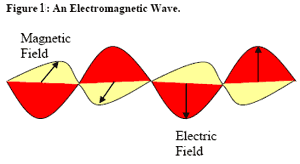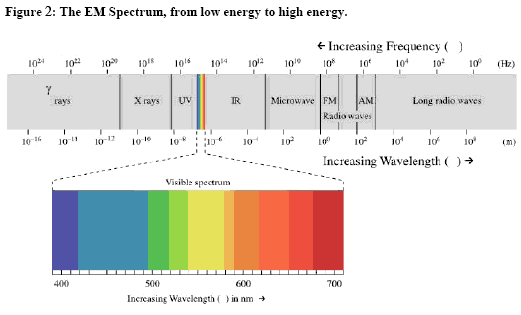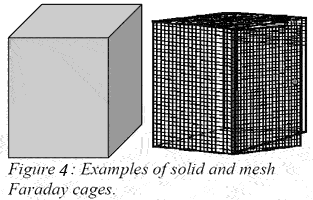
Assessing EMF Risks
- By Gayle Nicoll, Ph.D.
- Jun 16, 2008
Every time you turn around, you can see technology. Most of it uses electrical energy that creates electromagnetic fields (EMFs), but is this a problem?
EMFs first caused a stir in the late 1970s when a study linked them to childhood leukemia. Studies that have been performed since have produced differing results. The National Institute of National Health Sciences in 1999 reported that studies indicating a link can't be discounted, but that the overall evidence showed a weak link between EMF and increased cancer risk.
However, other risks exist. For example, EMFs from different sources can interact, causing an elevated flux density within an area. They can affect equipment performance, including computer monitors.
In addition, elevated EMFs within a facility can interact with pacemakers, causing them to malfunction.
What Can You Do?
Because you can't see or feel EMFs, you can't gauge effects. Industrial hygienists, however, can perform an EMF study. EMFs span a wide range of frequencies and energies, from extremely low frequency (ELF) to radio frequency (RF). EMF surveys generally focus on the extremely low frequency (ELF), very low frequency (VLF), and low frequency (LF) sections. Industrial hygienists use several different instruments to detect this wide range. These instruments can measure the flux density of magnetic and electric fields in three dimensions.

In an EMF study, an industrial hygienist or other qualified personnel perform a visual inspection of the facility site. The inspector identifies EMF sources and uses different detectors to measure the flux density systematically in real time. The measurements are made using industry guidelines and follow a fixed grid pattern in order to characterize the field strength over the entire area. The inspector then analyzes the data and prepares a report, including a map of the area, the identification of EMF sources and field strengths, and recommendations for the facility.
This study is recommended for facilities where high electric or magnetic fields are likely to be present. Some facilities expected to have EMFs from electric sources include power transmission facilities, electric cooperatives, and electric companies. Facilities expected to have high EMFs generated from magnetic sources include health care facilities with magnetic resonance imaging (MRI), research institutions with nuclear magnetic resonance (NMR), and nuclear cyclotrons and accelerators.
Two organizations have developed voluntary guidelines for EMF exposure. The International Commission on Non-Ionizing Radiation Protection (ICNIRP) addresses exposures at 60 Hz. The magnetic field limits are set at 4200 milliGauss (mG) for occupational exposure and 833 mG for the general public. The American Conference of Governmental Industrial Hygienist (ACGIH) provides that occupational exposures should not exceed 10,000 mG. ACGIH additionally recommends that workers with pacemakers should not exceed 1,000 mG. The ACGIH 10,000 mG guideline level and the ICNIRP level of 4,200 are intended to prevent effects, such as induced currents in cells or nerve stimulation.
Actually, the combination of EMF strength, the duration of exposure, and distance from the source cause the potential problem. Many everyday electrical objects, such as hair dryers and microwave ovens, emit relatively high EMFs when turned on but are not responsible for causing health problems.

EM Radiation in Detail
Electromagnetic (EM) radiation is a term given to a wide range of waves that have an electric field and a magnetic field. If the electric field is going up and down like a sinusoidal wave, the magnetic field is similarly going side to side (see Figure 1). Visible light is a familiar form of EM radiation. The EM spectrum ranges from low energy radio waves to high energy gamma rays. In between, there are microwaves, infrared (IR) waves, ultraviolet (UV) light, and X-rays (Figure 2).
EMFs with frequencies below visible light can be broken up into different categories based on frequency. The frequencies are used for different applications, such as radio waves, television, and microwaves. When people refer to EMF studies, these lower energy EM waves are what they are referring to.
Not all EM radiation is bad; the danger is in how it interacts with the body. Visible light is one example. When light enters the eye, the energy from the light excites electrons within the molecules at the back of the eye, changing the shape of the molecule. This change is detected by the brain in a series of steps, and humans “see” color. In the process, the molecules at the back of the eye return to their original shape. Visible light is not dangerous because humans have a way of taking advantage of the energy deposited in the eye. The body does not have as elegant a means of dealing with other types of EM radiation, however.

High-energy EM radiation includes UV, X-ray, and gamma radiation. The Earth is exposed to radiation from cosmic rays, the sun, and rocks in the ground. This EM radiation can be harmful because the rays can deposit enough energy into cells to break the chemical bonds between atoms within deoxyribonucleic acid (DNA) (Figure 3), which can cause cancer. When humans are exposed to large doses of EM radiation or are continually exposed over long periods of time, both strands of DNA may become damaged, giving the cell no way of correctly making repairs. The results can be serious, including the possibility of cancer and death.
 EM radiation with energies lower than visible light can cause damage, too, but for different reasons. Here, the EM radiation can interact with the molecules within cells, imparting energy to electrons, molecules, or cells. Infrared radiation, for example, can excite chemical bonds. Likewise, microwave ovens are useful for heating food because the EM radiation is at the same frequency as the vibration of water molecules. Microwave ovens are shielded from human beings because human bodies contain quite a bit of water, which could also absorb those microwaves. This could prove quite dangerous: the body could boil from the inside out.
EM radiation with energies lower than visible light can cause damage, too, but for different reasons. Here, the EM radiation can interact with the molecules within cells, imparting energy to electrons, molecules, or cells. Infrared radiation, for example, can excite chemical bonds. Likewise, microwave ovens are useful for heating food because the EM radiation is at the same frequency as the vibration of water molecules. Microwave ovens are shielded from human beings because human bodies contain quite a bit of water, which could also absorb those microwaves. This could prove quite dangerous: the body could boil from the inside out.
What protection is effective?
One means of EMF protection is positioning human beings farther away from the EMF source. A second useful means of EMF protection is called shielding. Shielding means placing a metallic, conducting shell (usually a box) around either the EMF source or the area that needs protecting. The conducting shell is called a Faraday cage. The Faraday cage can be made out of solid materials (like steel plates) or mesh (like chicken wire), as illustrated in Figure 4.
While both designs are useful; the thicker the material, the better the shielding. Thus, solid cages are more desirable in high EMF locations, albeit more expensive, than mesh cages. The material that the cage is made out of is also important: highly conductive metals, such as iron or copper, are preferable to less conductive metals, such as aluminum.
In order to be effective for long periods of time, Faraday cages should be electrically grounded. The term “electrically grounded” does not mean that the box is touching the floor or ground. This is an electrical term which means that the Faraday cage is at the same electrical potential as the Earth. “Grounding” is usually achieved by driving a long rod of highly conductive metal, like copper, about 20 feet into the Earth and connecting the rod to the Faraday cage. If the Faraday cage is not properly grounded, charge can build up over time on the surface of the cage, thereby causing the cage to generate EMFs. As a result, the cage itself can begin to transmit EMFs and negate the entire purpose of the shield.
 The same concept applies whether the EMF begins on the inside or outside of the Faraday cage. A Faraday cage can be used to surround the EMF source. This type of shield minimizes the EMFs on the other side of the shield. Alternatively, a Faraday cage could be placed around working areas to protect workers. EMFs could not penetrate the exterior surface of the cage and the workers inside (as well as the electrical equipment) would be protected. An important caveat to this practice, however, is that Faraday cages shield against all EMFs. Because cell phones and other electronic equipment operate via EMFs, these types of devices will not function within a Faraday cage, as no signal can penetrate the cage.
The same concept applies whether the EMF begins on the inside or outside of the Faraday cage. A Faraday cage can be used to surround the EMF source. This type of shield minimizes the EMFs on the other side of the shield. Alternatively, a Faraday cage could be placed around working areas to protect workers. EMFs could not penetrate the exterior surface of the cage and the workers inside (as well as the electrical equipment) would be protected. An important caveat to this practice, however, is that Faraday cages shield against all EMFs. Because cell phones and other electronic equipment operate via EMFs, these types of devices will not function within a Faraday cage, as no signal can penetrate the cage.
Link: http://www.niehs.nih.gov/health/topics/agents/emf/docs/niehs-report.pdf
About the Author
Gayle Nicoll, Ph.D., is a senior environmental scientist working in the Risk Management group of URS, a global consulting firm. Located in the Omaha, Neb., office, Nicoll holds degrees in chemistry from Purdue University. She has spent more than 15 years teaching and researching at universities across the nation.